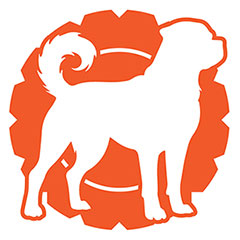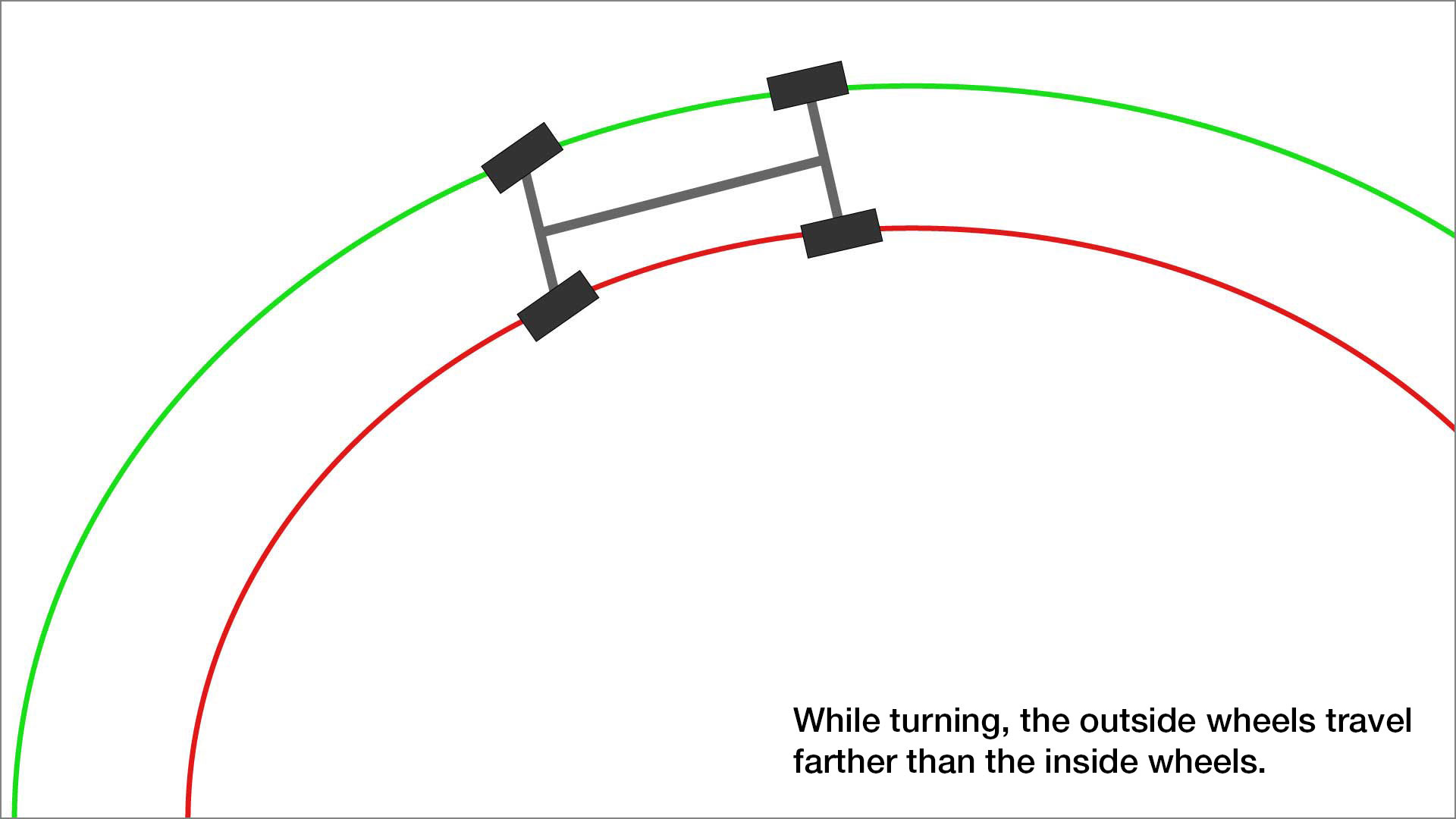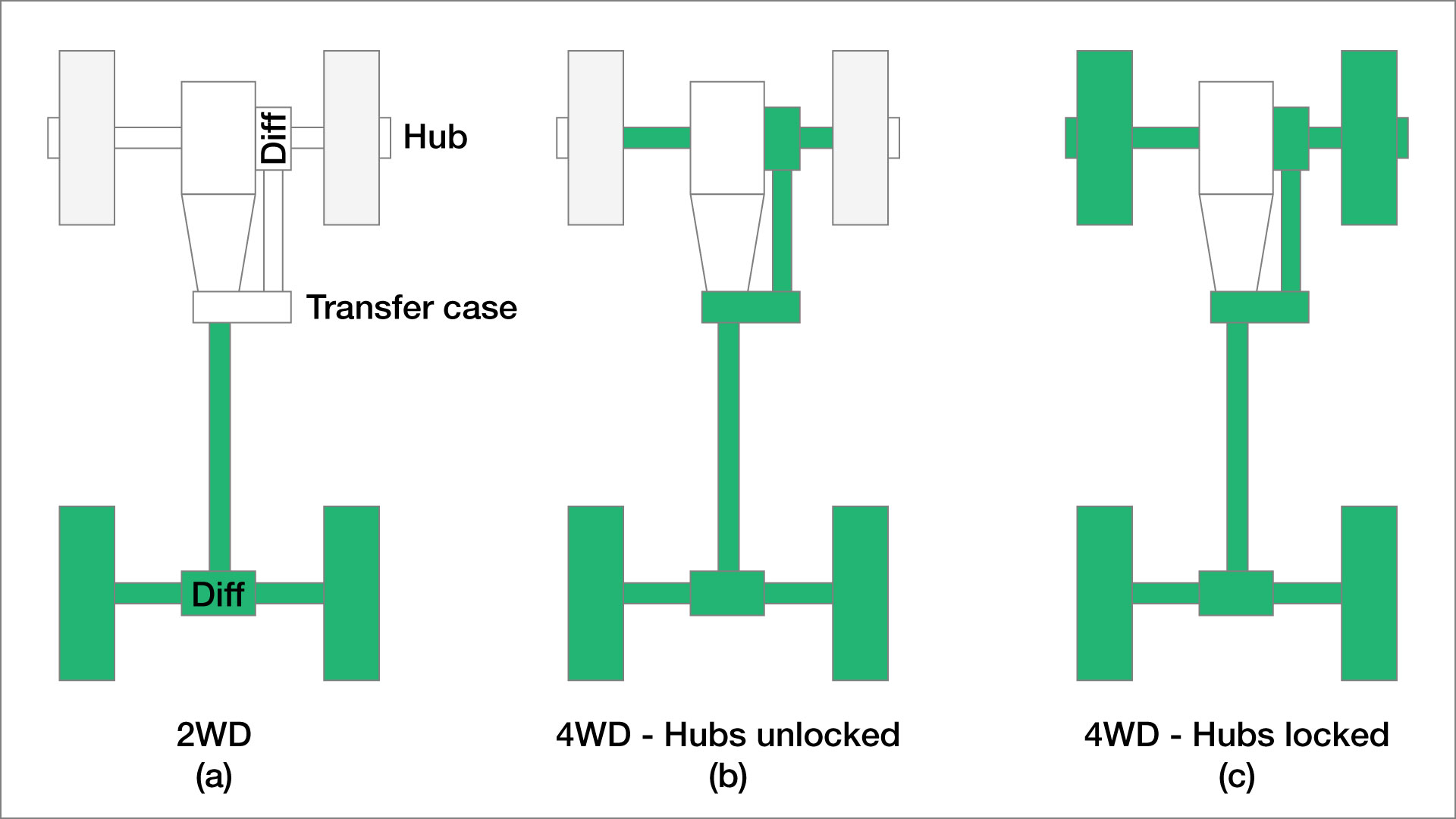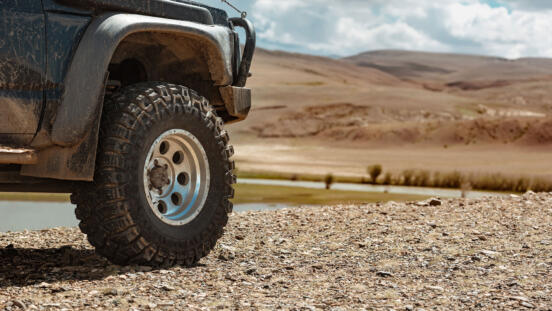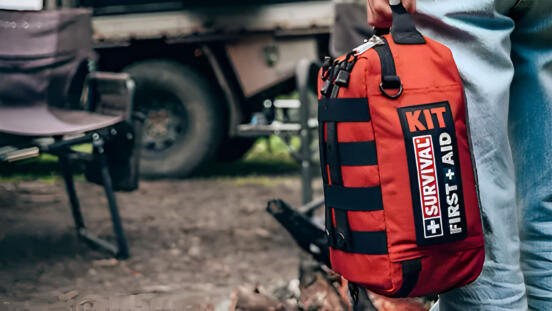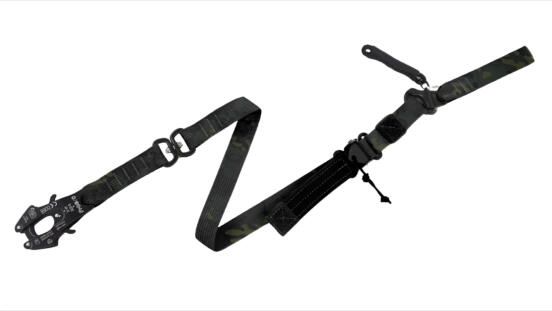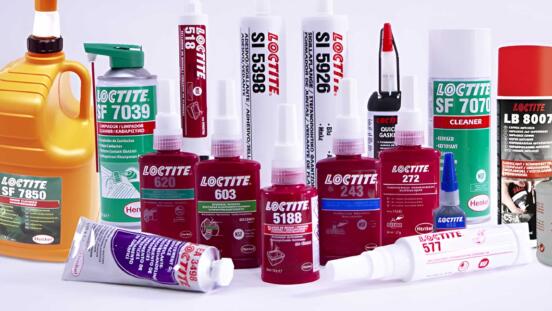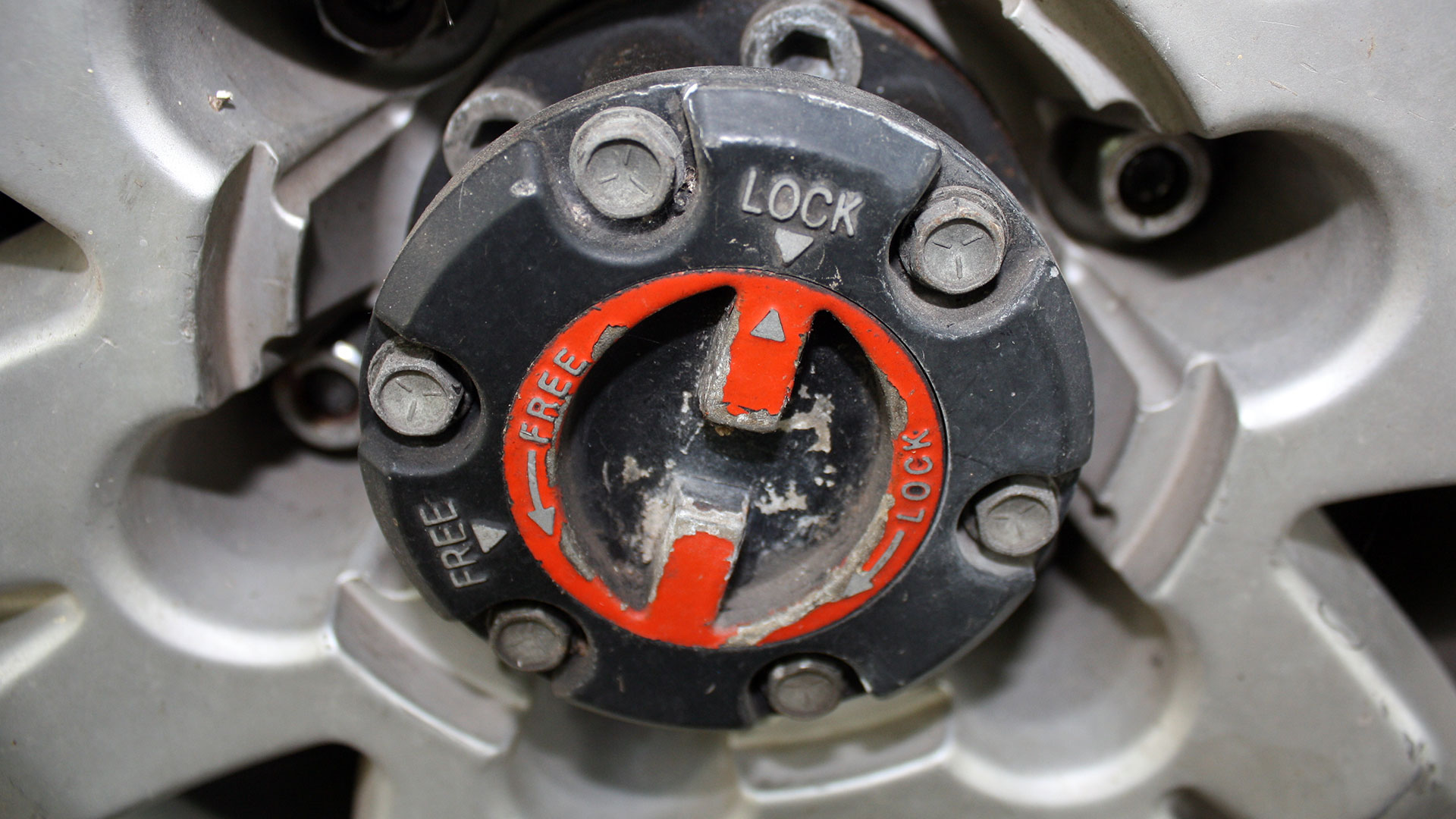
Typically a feature of older model four-wheel-drives, locking hubs (which are fitted to the front axle only) are often a point of confusion for new wheelers. Locking hubs and front diff-lockers can sound a bit like the same thing if not explained properly (especially by an armchair expert who has never used one in their life), but they are very different pieces of equipment. So let's clear things up.
You may already know, but for those that don't, your "four-wheel" drive is not actually sending power to all four wheels at all times. This is because when turning, the wheels inside your vehicle have less distance to travel than those on the outside.
Focus on one axle for a moment: If your wheels and axle were a single, solid piece, both wheels would have to spin at the same rate all the time, so when cornering one of the following would have to occur:
- The inside wheel, which has less distance to travel, will be forced to over-spin, doing a small 'burn-out' through every corner, or,
- The outside wheel, which has more distance to travel, must underspin, meaning you're effectively dragging a locked-up wheel through every corner.
On a 90° corner, your inside wheels will travel roughly 20% less than the outside. This will vary a bit, but whatever the exact distance this would not be a great system; 20% of the time on every turn you would be either spinning or dragging a wheel, creating a huge amount of unnecessary wear on tires and stress on your driveline.
This is why all standard vehicles have open differentials; when the opposing wheels of an axle have to travel different distances around a turn, one wheel is disconnected from the drivetrain so it can roll freely, while the other wheel remains engaged to provide drive power.
In a full-time, all-wheel-drive vehicle like the Subaru WRX, both the front and rear axles operate like this permanently; when there is no difference in wheel rotation speed on either side of the vehicle, power can be provided to all four wheels, when a difference is created through cornering, one side of the wheels will 'unlock' as above.
In a 4WD with front locking hubs (also called free-wheeling hubs), both front wheels can be disconnected from the drivetrain, turning your vehicle into a standard rear-wheel-drive with an open rear differential.
Below is a simplified diagram of a 4WD drivetrain in its various possible configurations, to show when locking hubs come into play:
- a) 2WD rear only - Transfer case (center diff) unlocked - Hubs unlocked.
- b) 4WD - Transfer case locked - Hubs unlocked
- c) 4WD - Transfer case locked - Hubs locked.
As you can see in diagram b), even though both the front and rear axle are receiving power, with the hubs unlocked no drive is provided to the front wheels and you are still effectively in 2-wheel rear drive. The front axle is spinning, but connected to nothing. It's not until you lock the front hubs that all 4 wheels can receive power.
Why use locking hubs instead of all-wheel-drive?
Compared to rear-wheel-drive, an all-wheel-drive system will generally provide better handling, and better traction during acceleration, particularly in wet-road conditions, but this comes at a cost.
Compared to rear-wheel-drive only, all-wheel-drive creates additional load on the driveline components, through friction and rotational inertia of these components some additional power is lost through the drivetrain resulting in less power at the wheels. This also results in a small increase in fuel usage.
Put simply, an all-wheel-drive system has more moving parts, and it takes more energy to move them. These parts are also under load, making them more subject to wear than free-rolling ones.
There's a lot of debate on how much this matters, and whether or not this makes a practical difference to you is completely subjective. For most, it won't. We all have different objectives for our vehicles and situations vary, facts are facts though, and should be acknowledged.
Unlocking your front hubs will result in less wear to some front components, increased fuel economy, and usually also a quieter ride. For most 4WD drivers, this is preferable while on the road.
When should you lock your hubs?
Your hubs need to be locked for any power to be delivered to the front wheels. Even with your center diff lock engaged, and front lockers on (if you have them) without having the front hubs locked, you're just rotating the front axle, but not the wheels themselves.
With your hubs unlocked, you're in rear-wheel-drive only, regardless of what else in the vehicle is engaged, as shown in the diagram above.
If you're doing a quick stint down an unpaved road, you probably wouldn't bother engaging the hubs. Just treat it as you would in any rear-wheel-drive vehicle and drive to the conditions accordingly.
As soon as you're heading off-road, into the mud, onto the sand, uneven loose surfaces, etc., anywhere you need additional traction, your hubs need to be locked.
(There are automatic and manual locking hubs, but that's a topic of its own we'll cover separately)
Happy wheeling.
# How do locking hubs work, what are locking hubs, when to use locking hubs, what are free-wheeling hubs?
